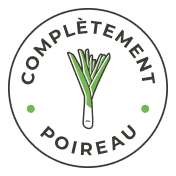Nutrition facts table
Nutrition facts table is useful to compare products between them and evaluate the best choice. First of all, it's best to evaluate the selection of products in its whole. For exemple, frozen prepared meals. In general, those meals are full of sodium, lipids and energy. So, those foods should be of exception. If we'd like to buy one of those, it is of use to compare similar products to decide over the right and beast version of the products we'd like to eat. As it is, for this exemple, we'd had compared frozen pizzas.
The nutritious value of foods is calculate based over a portion decided by the manufacturer. This portions isn't necessarily the portion you decided to eat. Plus, some manufacturers will evaluate a product over different portions. For exemple, some bakeries will give the nutrition facts table for 1 bread slice and others, for 2 bread slices. The important, is to evaluate the products over the amount we're used to eat and to compare products over equivalent amounts.
Standards suggested as below are typically ones i use with clients consulted in private practice. It's valid for food or ingredient which may be part of a snack or made for a meal. For exemple : chewy bars, breakfast cereals, cheese, yogurt...
Per portion eaten :
Inferior to 250 kcal (calories)
Less than 5 g of fats (except for nuts and grains)
Little saturated fat
No trans. fat
Less than 150 mg of sodium
Around 30 g of carbohydrate
2 g of fibers and more (for plant foods)
4 g of proteins is an interesting amount which helps to satisfy this need.
If more than 2 of those criteria aren't filled, we should think about avoiding eating such foods or chose as an exception food.
It is favorable to put all attention over criteria that can have a larger impact on health or goals we set up. For exemple : If the goal is to control your blood pressure, you have to always consider products based over the amount of sodium.
Another great way to take a decision about the nutritious amount of foods is to use the % of the daily value to help you make good choices.
it gives a glance of the nutritional profile of a food. Remember the following values as references.
this applies for all nutrients.
Ingredients list
The ingredients list identify ingredients in a decreasing order. The first ingredient over the list being the one present in a larger amount in the food.
Be careful about the following ingredients if it comes first on the list : sugar or sugar equivalent like brown sugar, honey, syrup, evaporated cane juice, fructose, glucose, oils and fats like vegetable oil, butter, mono and diglyceride, tallow.
The ingredients list also allows to identify allergens. Since august 2012, Canadian regulations forces manufacturers to clearly identify the presence of the 10 main allergens.




